Seamlessly Substitute Yarns for Any Knit or Crochet Project!
If you’ve been a maker for a long period of time, you will likely have had the experience of finding a pattern that you love, only to have the recommended yarn discontinued. So, you choose something else from your stash, only to be disappointed in the end result. Let’s talk about a few of the things that need to be considered to substitute yarns and how the choices you make will help you create a project that you love.
There are a number of reasons that you might want to substitute yarn, here are just a few:
- The suggested yarn has been discontinued.
- The suggested yarn is out of your budget.
- The suggested yarn doesn’t come in a shade that you like.
- You are trying to use up yarn from your stash.
- You have an allergy to the suggested fibre content.
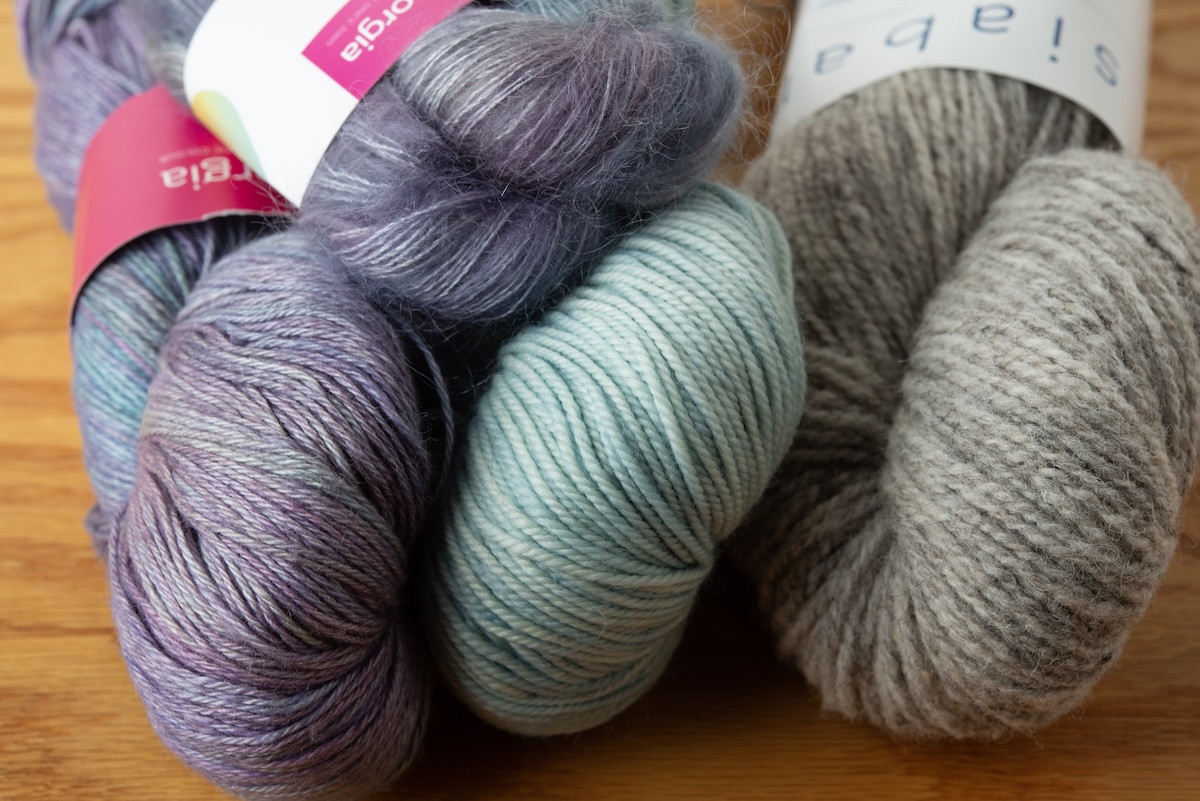
When we are looking at substituting yarn, here are the most important things to consider: yarn weight, fibre content, and yarn construction. Each of these things affects the way the yarn will work up and can drastically change the end result.
Yarn Weight
First up is yarn weight. This is not how heavy the skein of yarn is but instead how thick or thin the yarn is. In North America, the yarn weight is classified from thinnest to heaviest as lace, fingering/sock, sport, double knit (DK), worsted, aran, chunky, bulky, and jumbo. This classification can vary from country to country, so if you are working with a pattern that uses yarn from somewhere like the UK, you may need to look at a chart to figure out which weight you will need. The reason that the yarn weight matters is if you choose something that is a lot heavier or lighter than what is suggested in the pattern, you will not be able to get the correct gauge. When you don’t get the correct gauge, you will not get the correct fit on the garment you are making. Trust me when I say there is nothing more disappointing than spending countless hours on a project to get to the end and discover that it doesn’t fit!
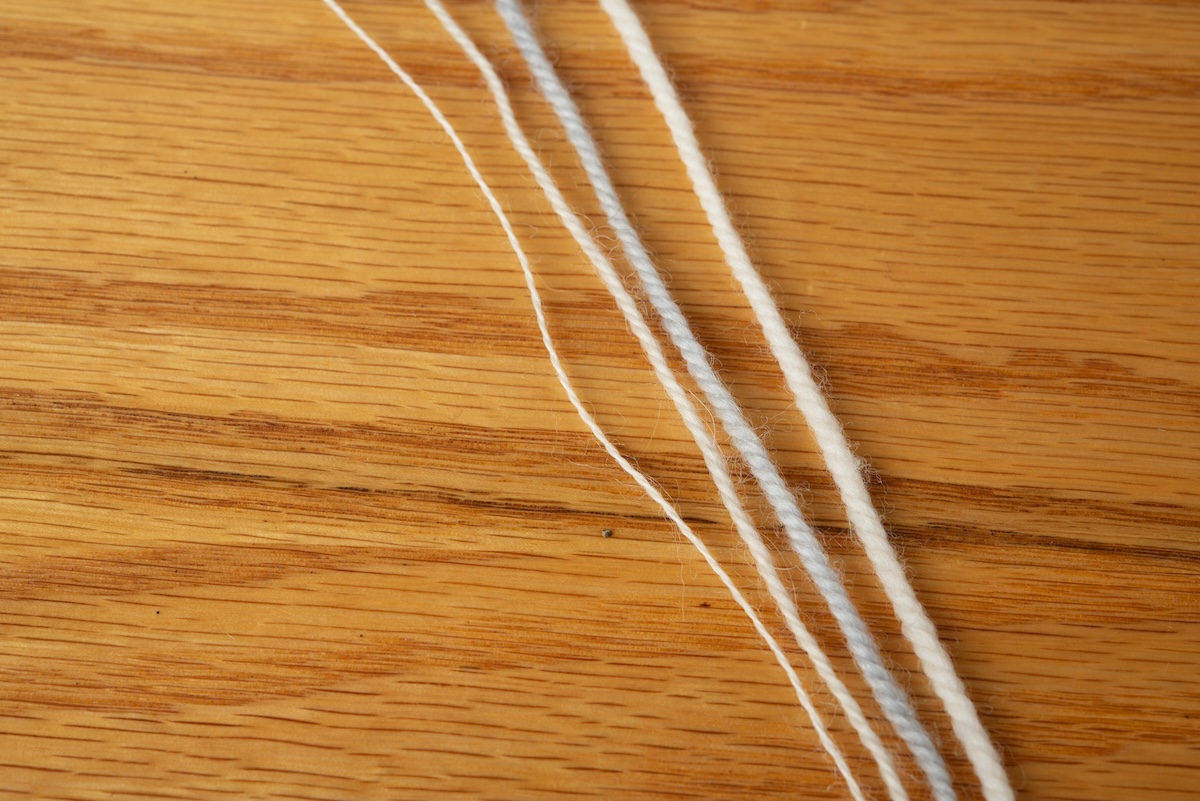
If you’re experienced, adventurous, or like to do a lot of math, you can absolutely use a drastically different yarn weight; just know that you will need to do a lot of adjusting. This choice is not for everyone, but I know a lot of people who like to adjust their patterns on the fly and are really good at it.
While choosing a yarn that is classified as the same weight, you are only dealing with part of the equation. Within each yarn weight classification, there are varying thicknesses of yarn. To make sure you are getting something that is similar, you need to look at two more things: the put-up and the wraps per inch or WPI.
Put Up
Put up refers to how your yarn is bundled up. Yarn can come bundled as cakes, cones, balls, hanks or skeins. Each of those bundles will have two key measurements on them. It will have how much the item weighs, as well as how much yardage it has. When you divide the yardage by the weight, you will get a ratio. If the fibre content of your yarn is similar, and the ratio of the yarn you want to use is similar to the recommended yarn, you will likely have found a good match.
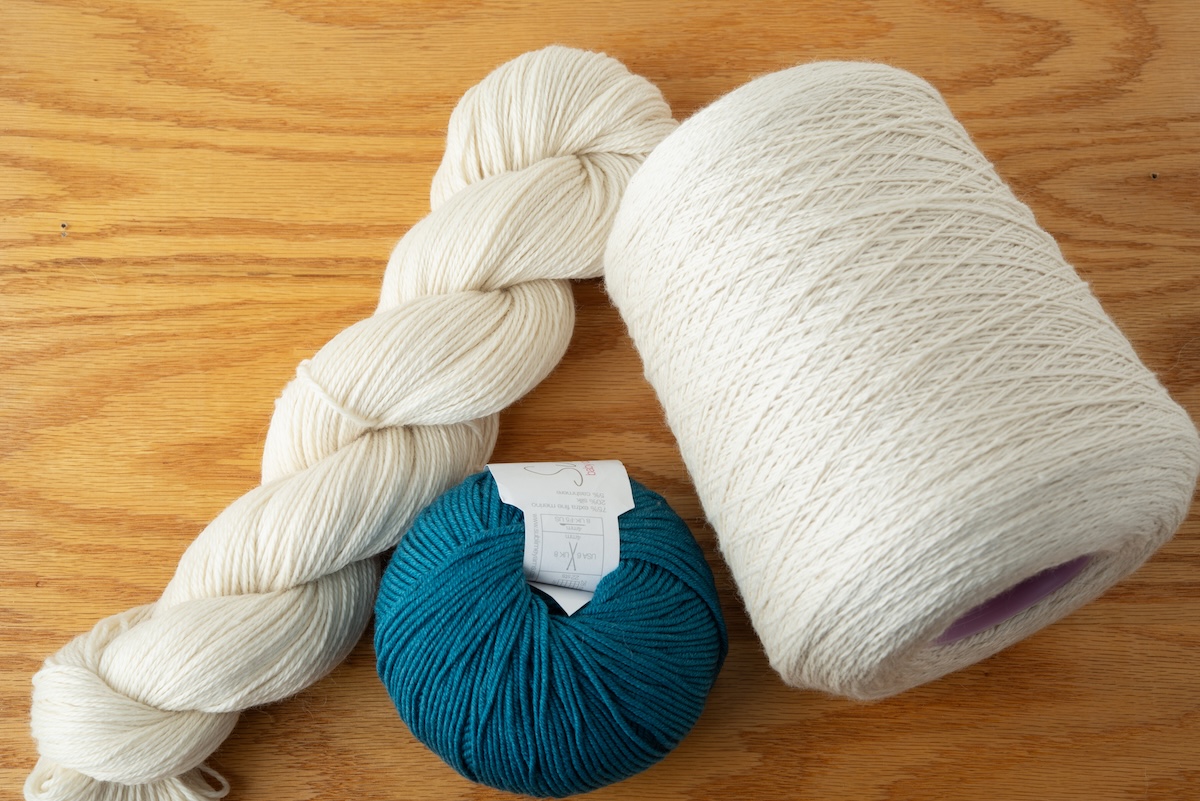
Wraps Per Inch
While the put-up will give you a good indication, WPI is one more thing that you can check. You can measure WPI by wrapping the yarn around a ruler or an object like a pencil or a knitting needle. When you are wrapping, be sure not to pull too tightly, as that will affect your measurement. Once you have wrapped a length, you will then count how many wraps are in an inch. This will give you your WPI. The reason that the WPI matters goes back to there being a range of thicknesses of yarn in each weight category.
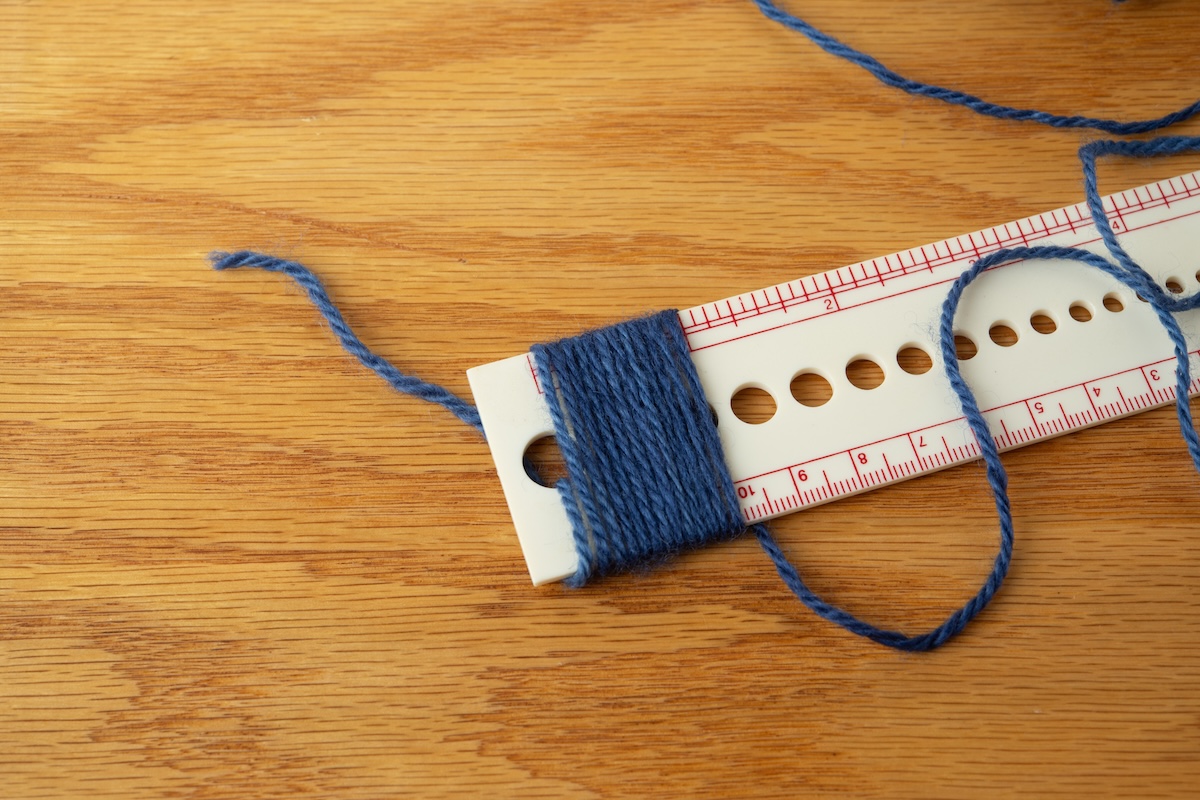
For instance, a DK-weight yarn can have a WPI of between 11 and 15, and that difference in the WPI will affect how many stitches you get per inch. When you multiply those stitches over several inches of knitting, you can quickly see how the difference between 11 and 15 WPI will add up over several inches of knitting, especially if you are working on a fitted garment. Ensuring that the yarn you have chosen and the suggested yarn are similar to WPI will help to ensure the success of your project. Some patterns have WPI in the description, as do some yarns.
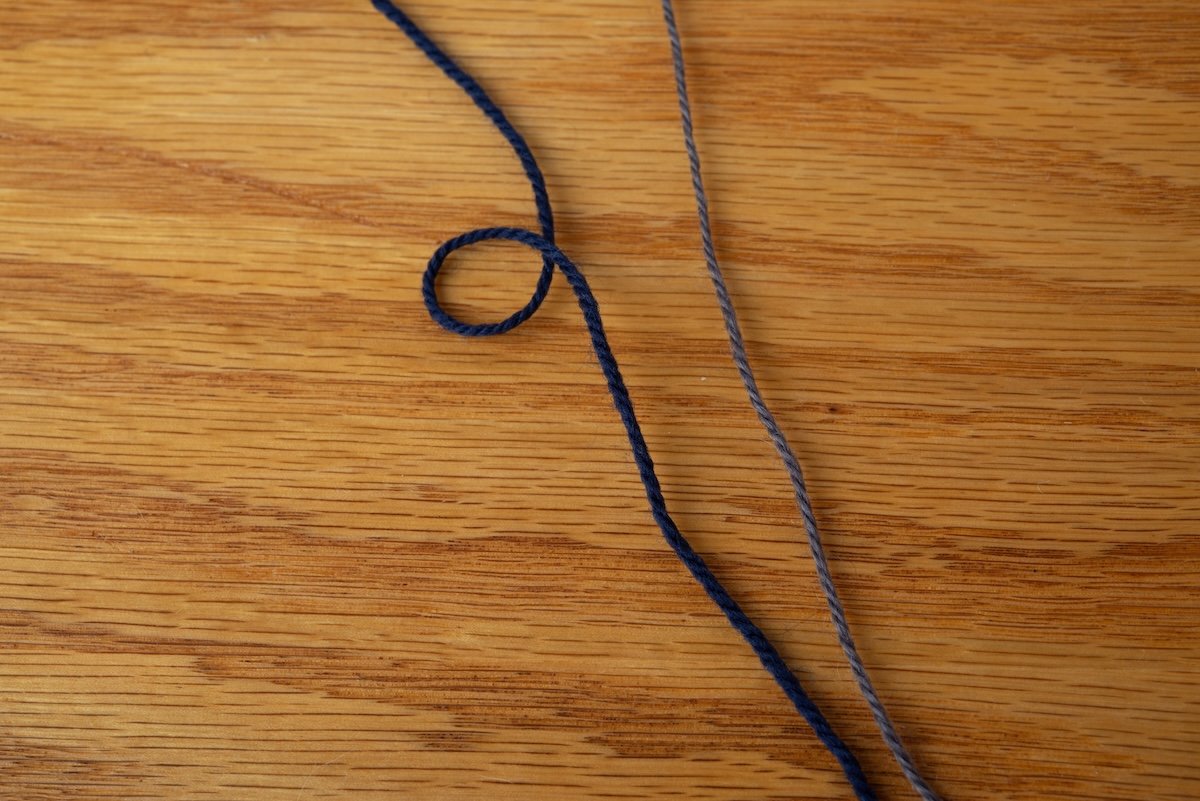
Fibre Content
The next thing to consider is the fibre content. When we break it down, fibre falls into five different categories which are wool, hair, silk, cellulose and synthetic/man-made. I explain these categories in a little more detail in my article on Knit & Crochet with Goat (and Rare) Yarns! The Coles Notes version of this follows.
Wool comes from sheep and is prized for its elasticity, warmth, and softness, depending on the breed. It is temperature regulating and will keep you warm, even when it’s wet. Given that there are over 1400 different breeds, you can imagine that there are many different properties to their varied fleeces. Hair fibre comes from a wide variety of different mammals and is prized for its softness and warmth.
Hair fibres are generally warmer than wool. They do not have the same elasticity as wool, so they are often blended with wool to create more resiliency. Silk is produced by silk moths and is coveted for its beautiful drape, lustre and strength. It does not have a lot of elasticity. Cellulose fibres come from plants like cotton and flax (linen). They are great choices for garments to be worn in warm weather but also lack resilience. They can also be prone to shrinkage. Synthetics or man-made fibres are things like acrylic, nylon or viscose. These fibres can flatten when blocked and tend to pill a little more than natural fibres.
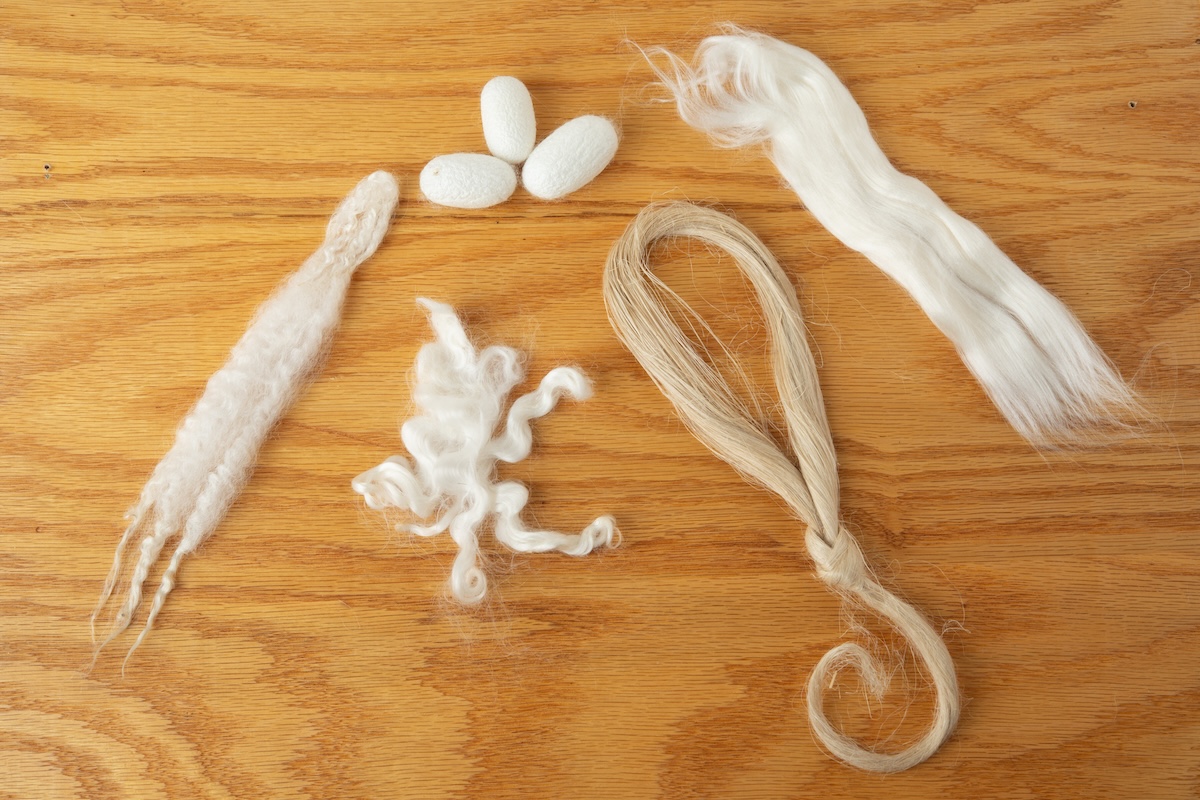
The Fleece and Fiber Sourcebook, by Carol Ekarius and Deborah Robson, is a great resource if you really want to learn about fibre and how it differs from breed to breed. It is geared towards spinners, but it is filled with so much incredible information that will benefit anyone working with fibre.
The pattern designer has likely chosen the yarn they are using for specific reasons. It could be for the structure the yarn provides or maybe the drape. Learning and understanding how a particular fibre will work up will make choosing a substitute for the fibre content a lot easier.
As a general rule of thumb, it is usually best to try and substitute with a yarn that stays within the same category of fibres, but there are exceptions. For example, if the pattern calls for linen, substituting wool will affect the fit, the wear, the drape, and so much more. However, you might be able to get a somewhat similar match using silk instead of linen, even though they aren’t in the same category. This is because neither one has a lot of elasticity, but both have beautiful drapes.
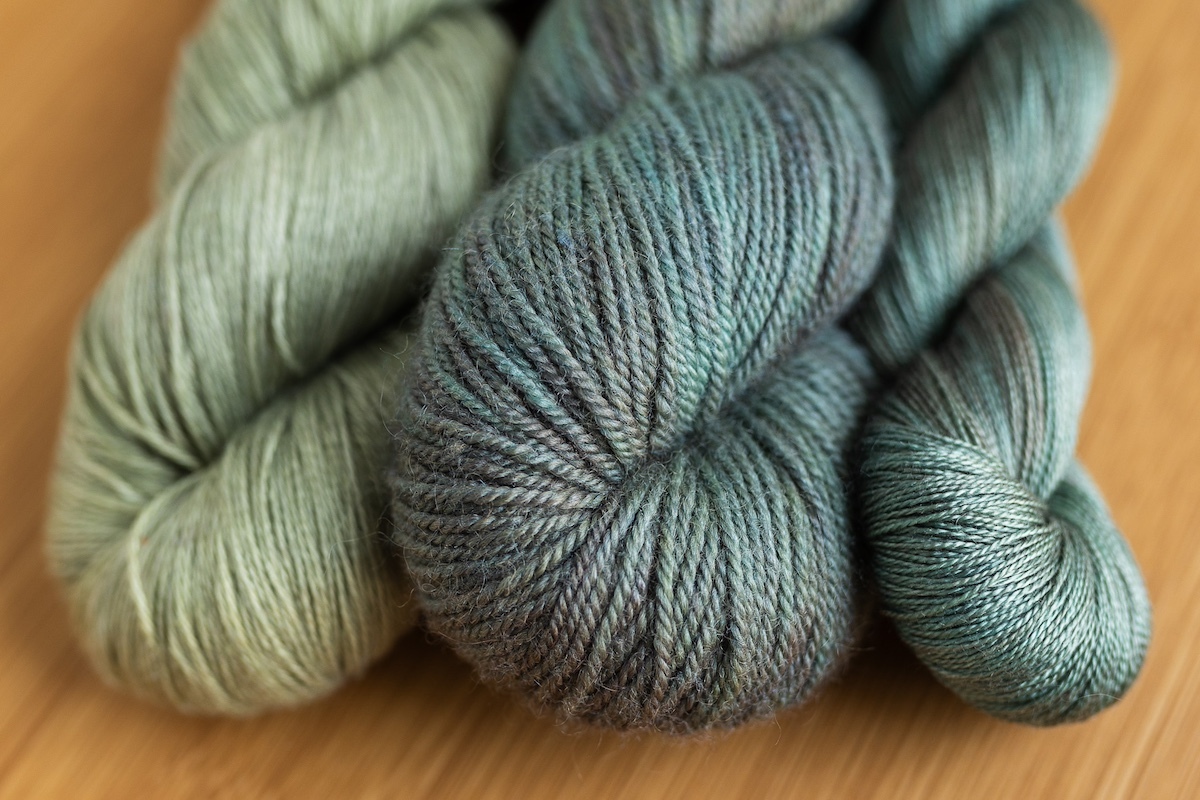
When dealing with wool, you can often substitute different breeds, but not always. For example, if the pattern calls for merino, you could substitute targhee because they are both shorter stapled fibres, and the way they work up is similar. However, you may not want to substitute bluefaced leicester (BFL) because BFL is a longer stapled fibre and has more drape and less structure. You can make the substitution, but it’s going to work up and wear slightly differently.
If the pattern is using two yarns held together, understanding the make-up of the two individual yarns is also important. A lot of recent patterns will hold a brushed kid mohair/silk lace together with a fingering weight to make a DK weight yarn. The kid mohair provides a lovely halo to the garment, but it also allows for a slightly looser gauge because the brushed mohair fills in the holes. If you were to substitute this yarn for a standard wool DK weight yarn, you might notice some difference in how the gauge works. However, if you were to substitute with a brushed mohair DK yarn, you would likely get a very similar result without having to hold two yarns together.
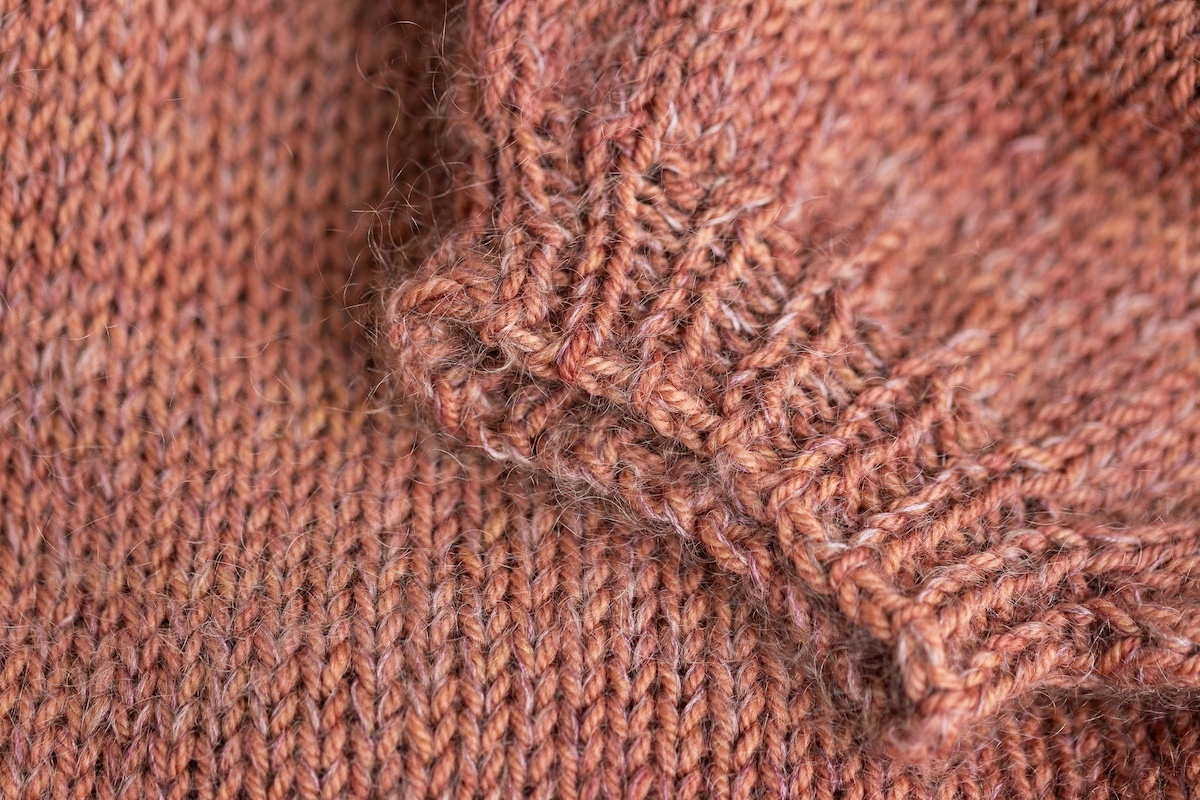
Overall, you want to remember what your end goal is. If you want the pattern to look exactly as it does in the pattern, try to match the fibres exactly, as it will give you the best results. If you’re okay with a little bit of variability, you can definitely try something different.
Yarn Structure
Finally, we come to yarn structure. I talk a lot about how the structure of your yarn affects your knitting in the article I wrote about yarn plies, so again, this is the shortened version of that information.
Yarn Plies
All yarn starts out as fibre and putting twist into that fibre is what creates yarn. When we are spinning a yarn, we first spin what is called a singles. We then take two or more singles and twist them together in the opposite direction to form a plied yarn. This is then bundled up and sold to the crafter.
There are a few important considerations to note about the structure of your yarn. If the pattern is using a 3-ply yarn but the yarn that you want to use in its place is a singles, you will get a very different result. The more plies a yarn has, the rounder it is. It will tend to be better at holding the definition of cables and stitch patterns, whereas a singles will knit up a lot flatter. A singles yarn will also not wear as long as a 3-ply as it is not as durable, and it will also be more prone to pilling.
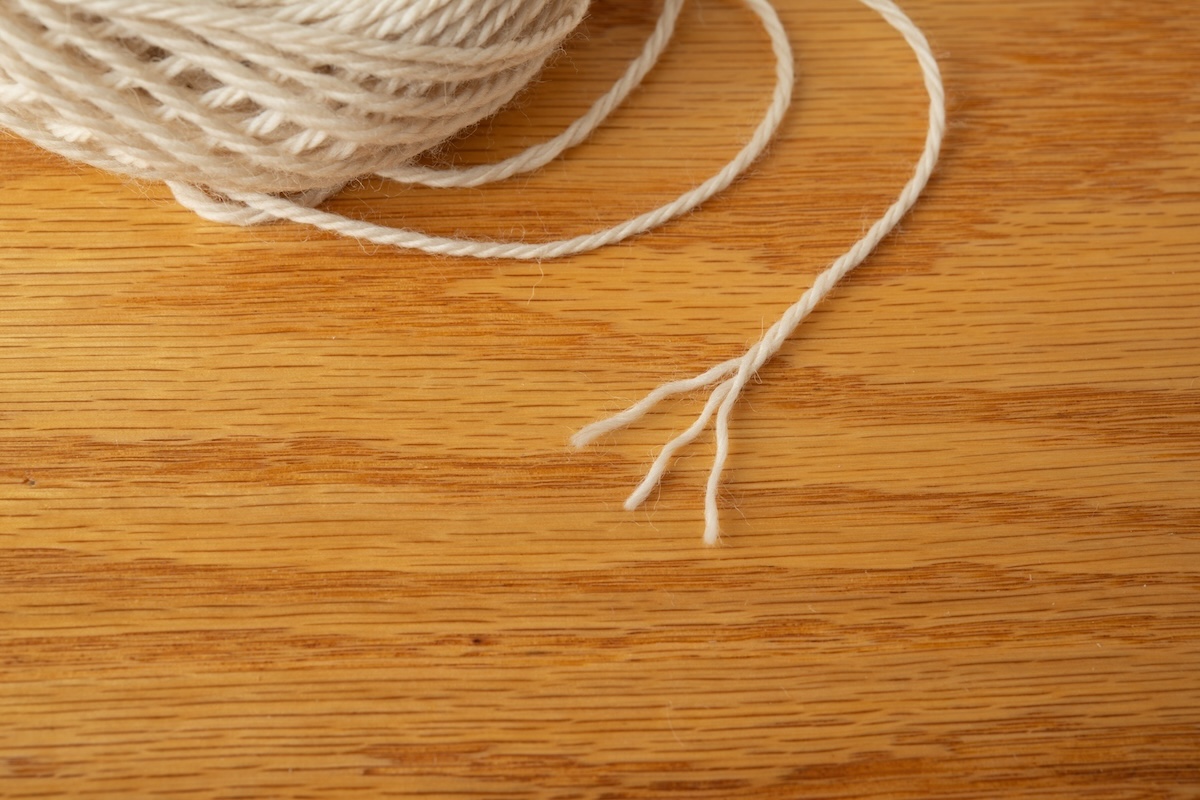
The same holds true in the other direction. A 2-ply is more oblong in shape and is really great for knitting lace, as the structure of the yarn holds open the holes beautifully. So, if you were to substitute a 3-ply yarn in its place, you would likely have less definition in the lace work when you go to block it. This is because the 3-ply yarn is rounder and pushes into the open work of lace a little more.
Get a deeper dive with my article Understanding Yarn Plies for Knitters & Crocheters.
Worsted or Woollen Spun
Within the umbrella of yarn, structures also include whether they are worsted or woollen spun. Again, I do have a more detailed article about the differences between worsted and woollen spun yarn, and this is a condensed version of that information.
A worsted spun yarn will be sleeker, cooler and more hard-wearing, whereas a woollen spun yarn will be fluffier, warmer and more prone to pilling. When a worsted spun yarn is created, a lot of the air is pushed out of it, whereas with a woollen spun yarn, a lot of air is trapped between the fibres. This air traps heat and is what makes this type of yarn warmer. Whether a yarn is worsted or woollen spun isn’t always marked on the label, but you should be able to see the difference by looking at the yarn. A worsted spun yarn’s surface will be smoother, whereas a woollen spun yarn’s surface will seem a little more disorganized. In general, most commercial yarn will be worsted spun, and a lot of the smaller batched mill-spun yarn will be woollen spun. There are, however, some big mills that produce woollen spun yarn, like Briggs and Little.
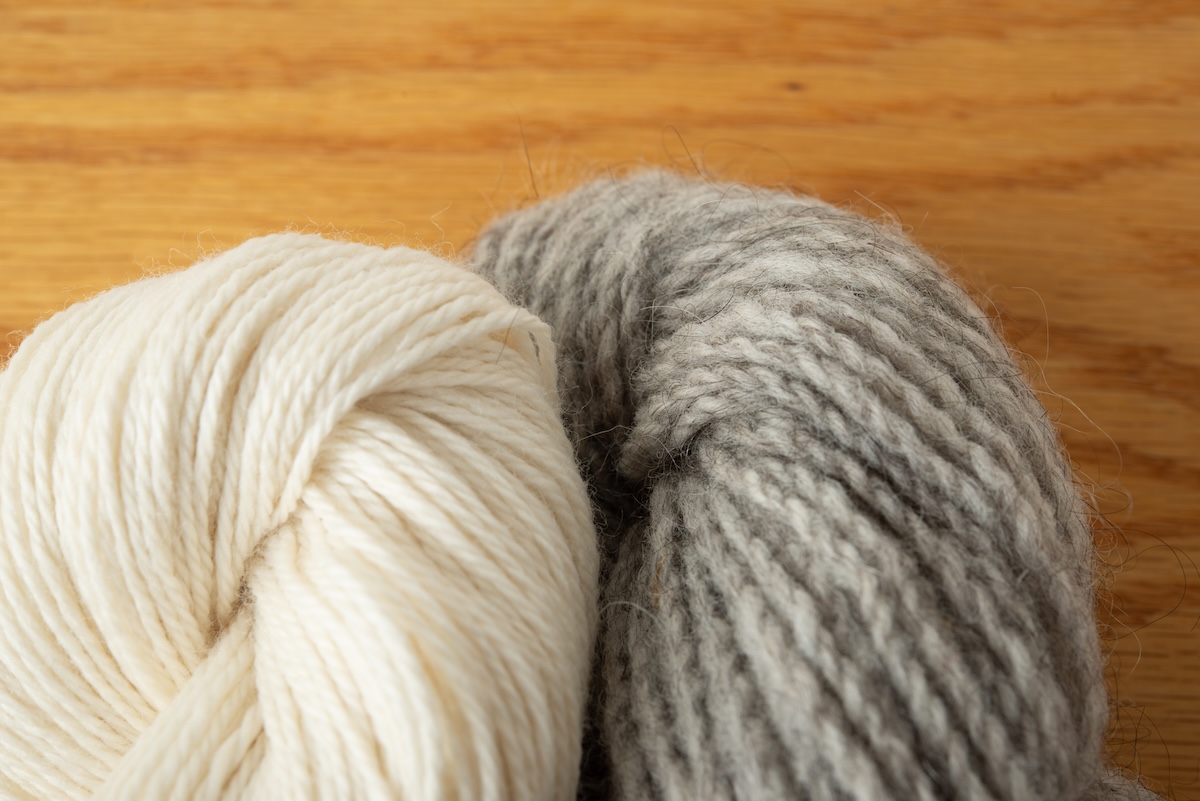
Understanding the end use of your yarn will make it easiest to choose how the yarn should be spun. My general rule of thumb is that if the item I am making is going to take a lot of abuse, like socks, then I will use a worsted spun yarn with at least 3-plies. If the item I am making needs to be cozy and warm and there will be minimal abrasions, like a scarf or toque, I will choose a woollen spun yarn. That said, a woollen spun yarn can make super cozy slippers, they will just wear through the sole faster than a worsted spun yarn.
Final Thoughts
So, at the end of the day, knowing these few key points will make substituting your yarn a lot easier. Matching the weight, contents, and structure as closely as possible will get you a result that is very similar to what the designer had in mind and will help you create a successful project.
Find more of Katrina’s articles here on SweetGeorgia and her courses at the School of SweetGeorgia!
The post Seamlessly Substitute Yarns for Any Knit or Crochet Project! appeared first on SweetGeorgia Yarns.
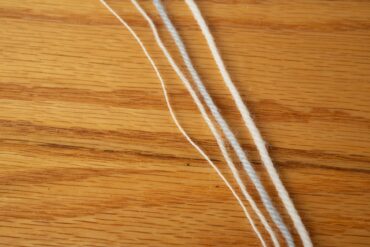
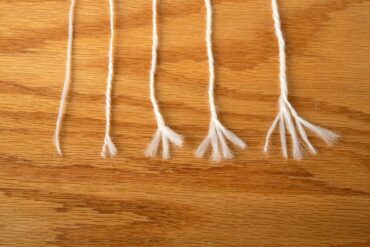
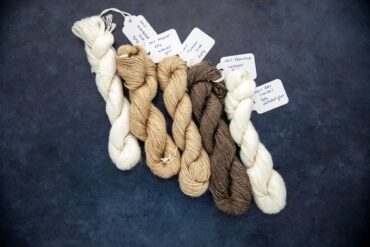
Comments
Post a Comment